Some say Shanghai isn’t really China. Others claim they dislike Chinese cities—but love Shanghai. That’s because the most populous city in the most populated country on Earth is all about modernity, neon lights, and stunning contrasts.
It’s international and opulent—but also beautiful. Welcome to our guide to Shanghai: the futuristic face of China.
If you’ve never been to Asia or China before, Shanghai might be the easiest introduction. While Beijing’s beauty is undeniable, China’s administrative capital feels more local in its social and cultural rhythms.
By contrast, the so-called “Paris of the East” has been styled to showcase the China of tomorrow.
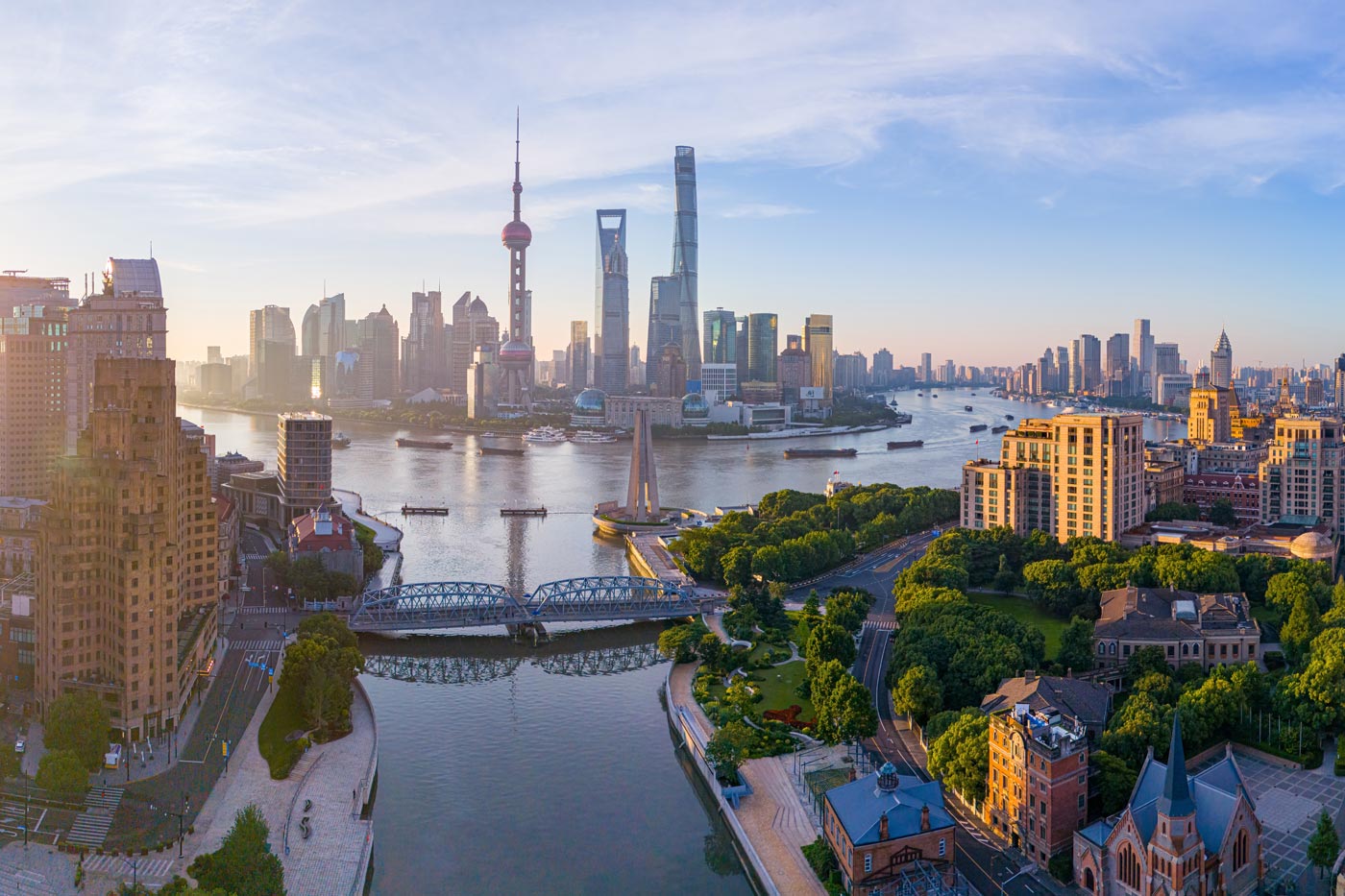
This city might be the easiest to navigate in the land of the dragon, thanks to its unmistakably international vibe. That’s why many travelers who are new to Asia feel more at home here. Does that mean Shanghai lacks soul? Quite the opposite. Shanghai fascinates with its fusion.
You can practice morning tai chi in a park while elders play Chinese chess, enjoy dim sum for breakfast at a traditional eatery, stroll through the French Concession admiring colonial-era architecture, grab noodles at a street market, and finish the day atop a shimmering glass skyscraper in Pudong.
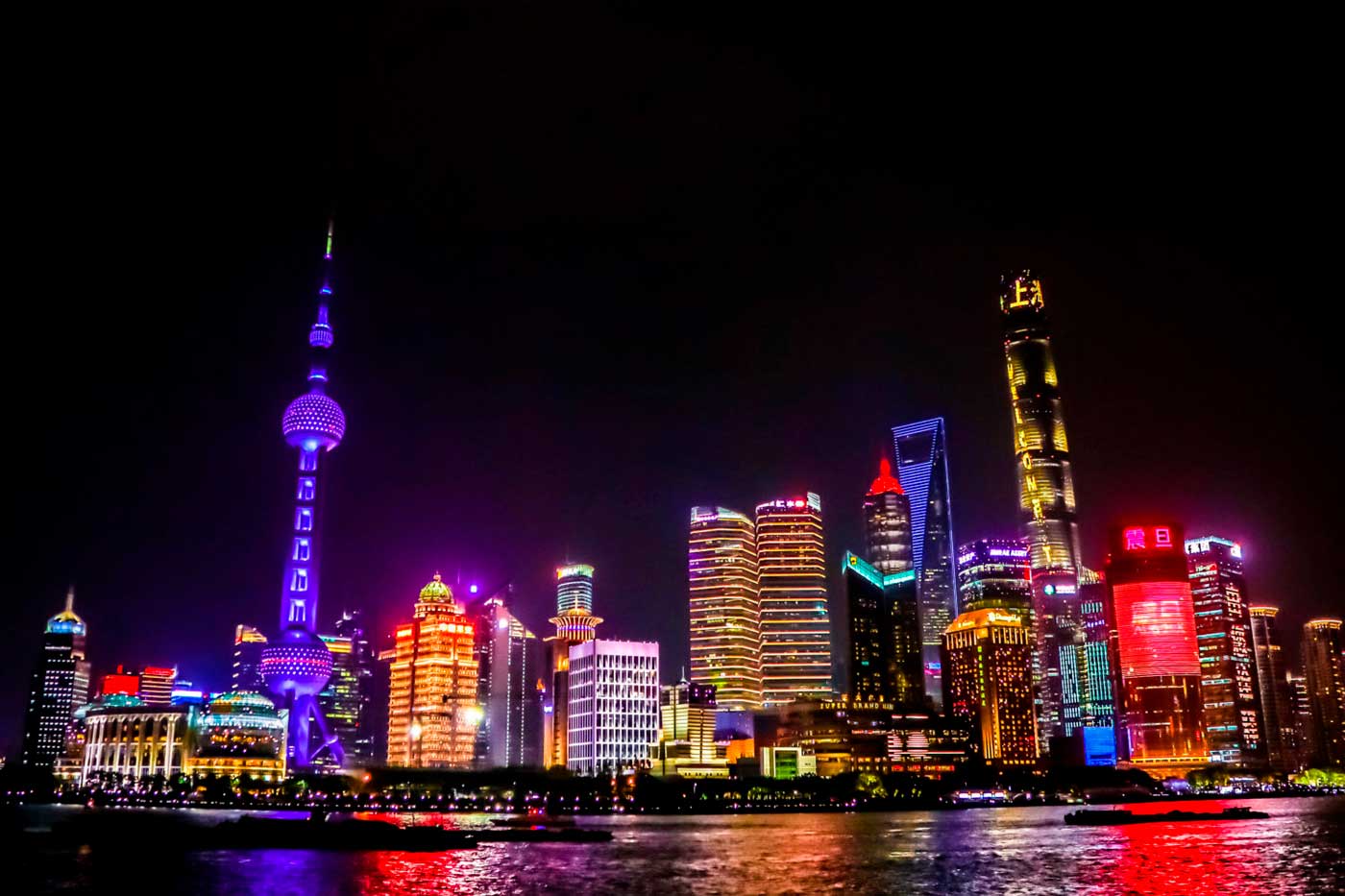
Thanks to its global character, you’ll also find it easier to meet locals who speak English here than in other Chinese cities.
Shanghai’s historical significance comes from its strategic role in global trade, which led to the rise of the region’s most important port in the 19th century. A century ago, British bankers mingled with Chinese merchants in its busy streets.
Persecuted Jewish communities found refuge in its neighborhoods, and this cultural mix drew in artists, revolutionaries, and hedonists alike. Hence the comparison to Paris.
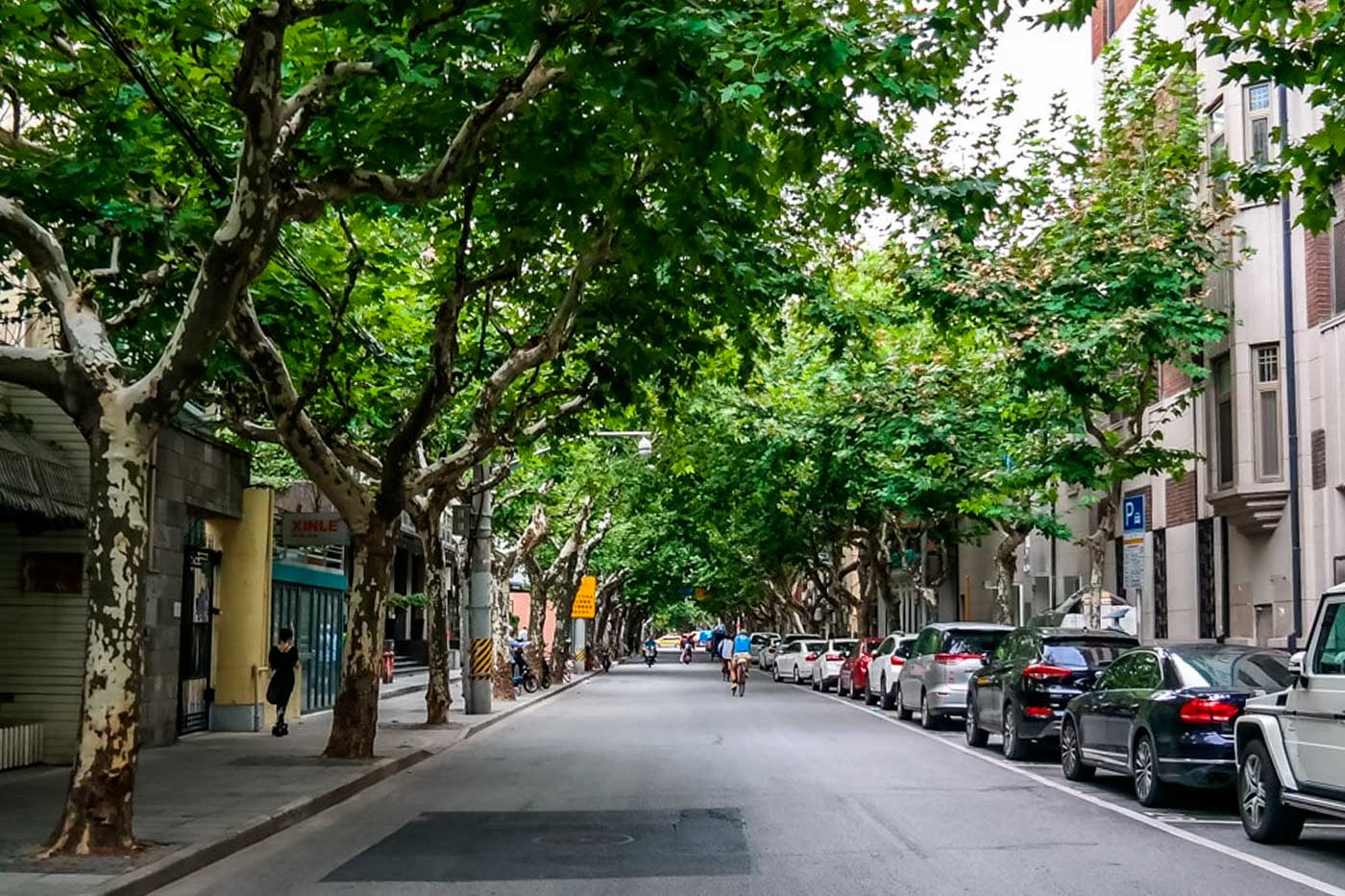
Shanghai’s cosmopolitan spirit was born in that era—and neither the Japanese occupation nor the communist revolution could destroy it. In fact, the Chinese government recognized its potential in the 1990s when, in a push to open the country to the world, it chose the “Paris of the East” to represent the new China.
In just two decades, Shanghai reemerged as a financial and tech powerhouse, overtaking Hong Kong as Asia’s top port and attracting talent from all over the globe. As a bold statement, Deng Xiaoping’s administration built Pudong—a futuristic district of skyscrapers symbolizing the country’s rise.
Shanghai’s skyline is now so iconic that the financial district appears on China’s 100-yuan banknote.
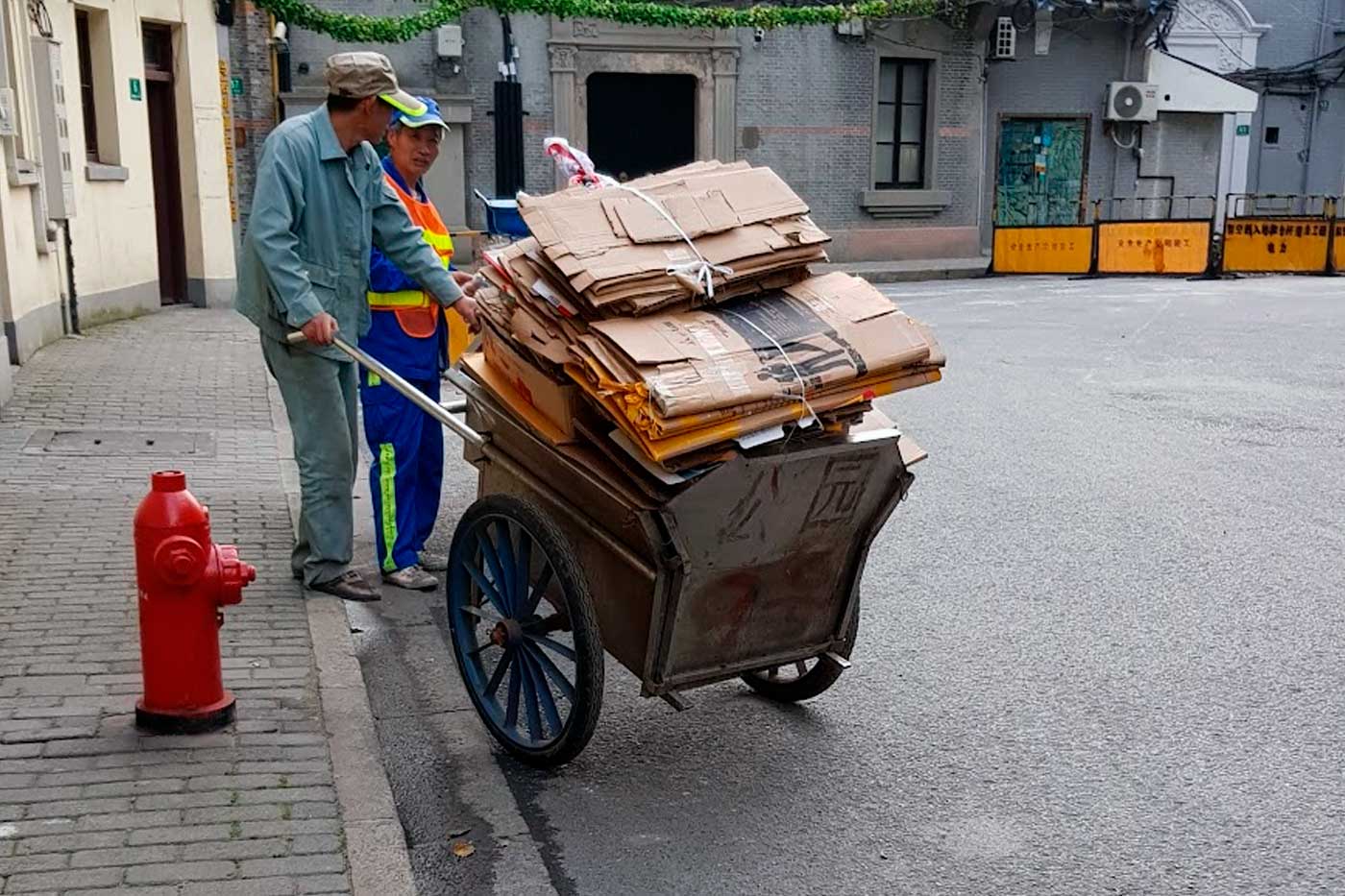
As a traveler, Shanghai is a captivating global metropolis—financially, culturally, and visually. But it also retains deep Chinese traditions.
As the most populous city in China, with over 25 million residents, it blends rich heritage with dazzling modernity. It’s a window into the new China.
Shanghai is the easiest city to explore in China, but the world’s most populous country still presents a few challenges. Some of these are common throughout China—like accessing the internet—while others are specific to Shanghai itself.
Shanghai is often labeled an expensive city, but that may be an unfair reputation. For example, you can take the metro from the airport to the city center for just over one euro, or enjoy a good meal for just a few coins.
That said, it is the most expensive city in China, especially when it comes to accommodation. Surrounded by luxury, your budget can easily skyrocket if you dine in skyscraper restaurants.
Shanghai is perhaps the most English-friendly city in China, and it’s certainly the most international. Still, it’s a good idea to use a translator app on your phone, as Mandarin is the main language spoken here, followed by Shanghainese.
The city is highly walkable, and many places are easily accessible on foot. It’s easy to get around—just keep in mind that Google Maps doesn’t work well, but Apple Maps does—and the level of safety is very high. Taxis are also quite affordable.
To pay for things, be sure to download the Alipay app and link it to your bank card. It’s the standard payment method in China and also gives you access to the DiDi ride-hailing app.
You can visit Shanghai at any time of year. Summers are hot but manageable if you’re used to the climate in Spain or most of Latin America. Winter, however, is a different story.

We’d argue that Shanghai has some of the coldest interiors in China. By interiors, we mean homes, hotels, restaurants—basically anywhere indoors. This dates back to an old law from the Communist era that banned heating in the southern half of the country. As a result, residents often rely on portable electric heaters.
Shanghai sits right at the edge of this “southern half,” making central heating technically off-limits. And yet, winter temperatures can dip below zero.
Does this mean Shanghai isn’t worth visiting in December or January? Only if you’re particularly sensitive to the cold. If you’re used to winter weather, you’ll only feel chilly when indoors.
But if you live in a warm climate, this can be a real shock: it’s cold outside, and your hotel may not provide the level of indoor warmth you’re used to.
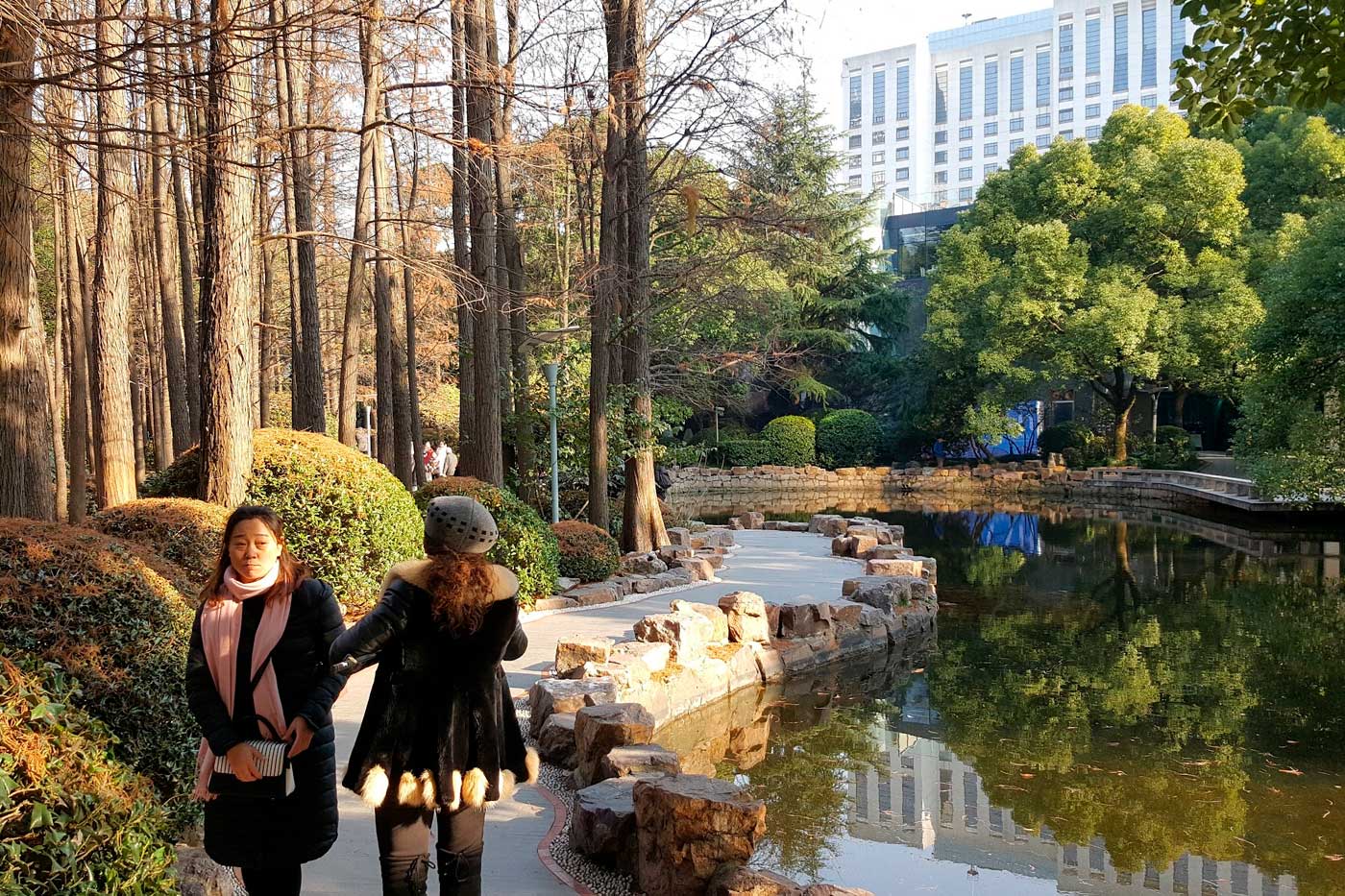
The best times to visit Shanghai are spring and autumn. From March to May, you’ll enjoy clear skies and mild temperatures. September through November brings drier weather and vibrant parks full of color.
Summer (June to August) is the rainiest season, with high humidity and temperatures reaching 30°C.
Winter, as mentioned, can be quite harsh—but it’s also the cheapest season and the least crowded. So if you don’t mind bundling up, it can offer a unique and peaceful experience.
Currently, citizens from many European countries—as well as Brazil, Argentina, Chile, Peru, and Uruguay—can travel to Shanghai (and other parts of China) visa-free for up to 30 days. No paperwork is required, just show up with a valid passport.

This policy was introduced in 2024 and has been extended in some countries until the end of 2025 or even 2026. We recommend checking the official website of the Chinese embassy in your country of residence.
If you’re staying longer or coming from a country not included in the exemption, you’ll need to apply for a Chinese visa. We explain how to do that here (coming soon).
We always recommend getting comprehensive travel insurance for China—ideally one that covers substantial medical costs and allows for direct payment, so you don’t have to pay out of pocket. In a previous article, we covered healthcare in China in more detail, including tips for choosing the best insurance and how to save money (like with the Heymondo discount).
In most parts of the world, you can easily connect to the internet with a local SIM or an eSIM. But in China, things are different.
There are significant restrictions on internet access in China. Apps like Google, Instagram, WhatsApp, and many others won’t work if you’re using Chinese networks.
So, what’s the solution? Expensive international roaming—or the smarter option: an eSIM.

If you want full connectivity—accessing maps, social media, search engines, and all your usual apps—you’ll need an eSIM designed for China. The country’s firewall applies only to in-country Wi-Fi and local SIMs.
However, with services like Holafly or Saily, your phone operates in roaming mode, giving you unrestricted access to platforms like Google and Meta, which would otherwise be blocked in China.
If there’s one place in Asia that’s easily accessible from Spain, it’s Shanghai. The tech capital of the world’s most populous country is well connected to the airports in Barcelona and Madrid, often with very affordable flights.
The highest number of air connections between Spain and China are through Shanghai.
The main airline is Air China, departing from Barcelona, but you can also fly with China Southern, which offers direct flights from Madrid—often at very competitive prices.
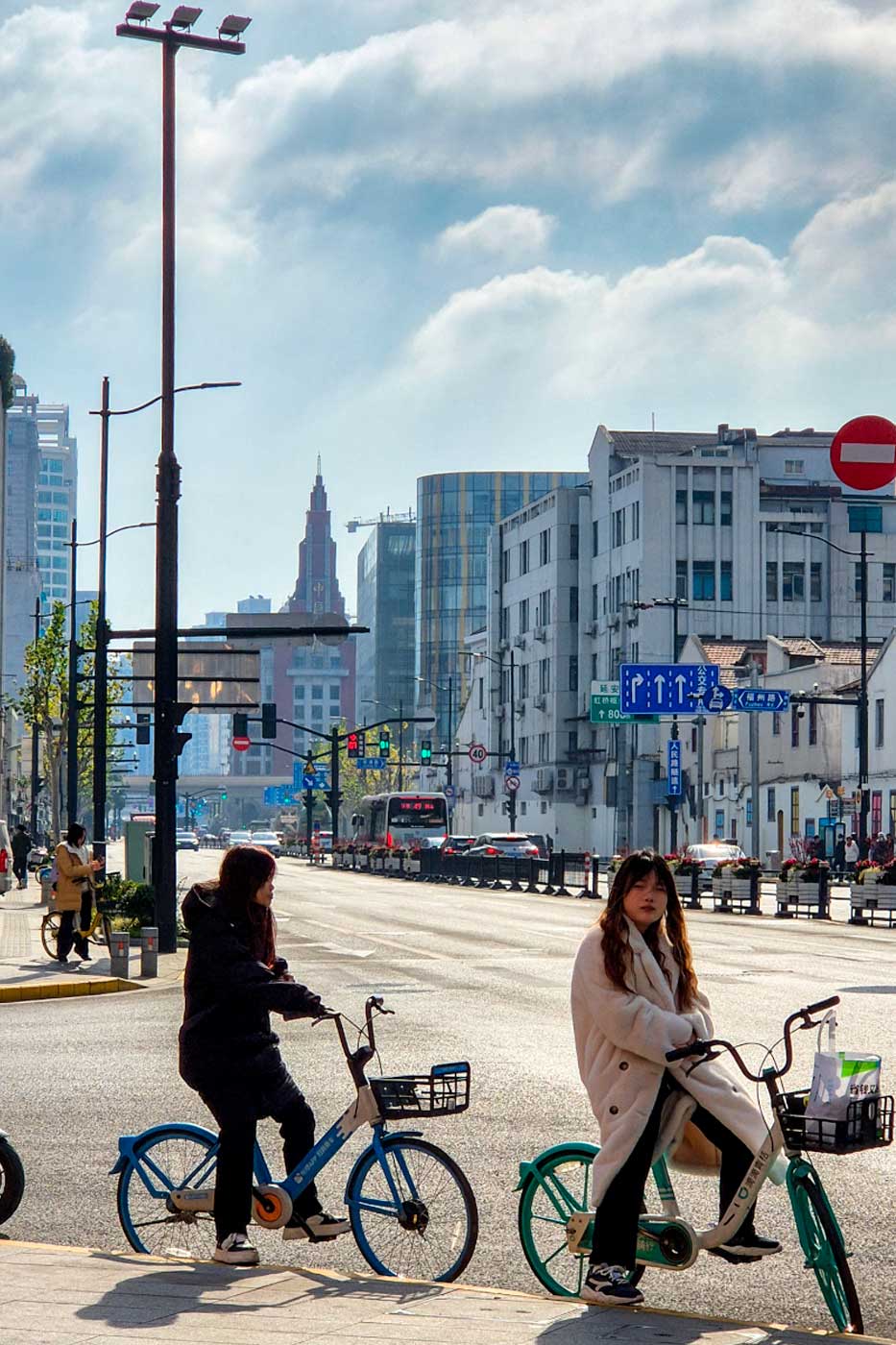
If you’re traveling from the Americas, the journey is longer, so it may be more convenient to fly via Spain or other Asian destinations. Shanghai also has great flight connections with Bangkok, Tokyo, Seoul, and Taipei.
If you prefer traveling by land, Shanghai is well connected to the rest of China through its high-speed rail network. For example, a train from Beijing to Shanghai costs around $75 for a five-hour ride.
A great place to begin your visit to Shanghai is People’s Park (look for it on your map as 人民公园).
It’s a vibrant plaza in the city center with a uniquely Chinese atmosphere and rich cultural value.
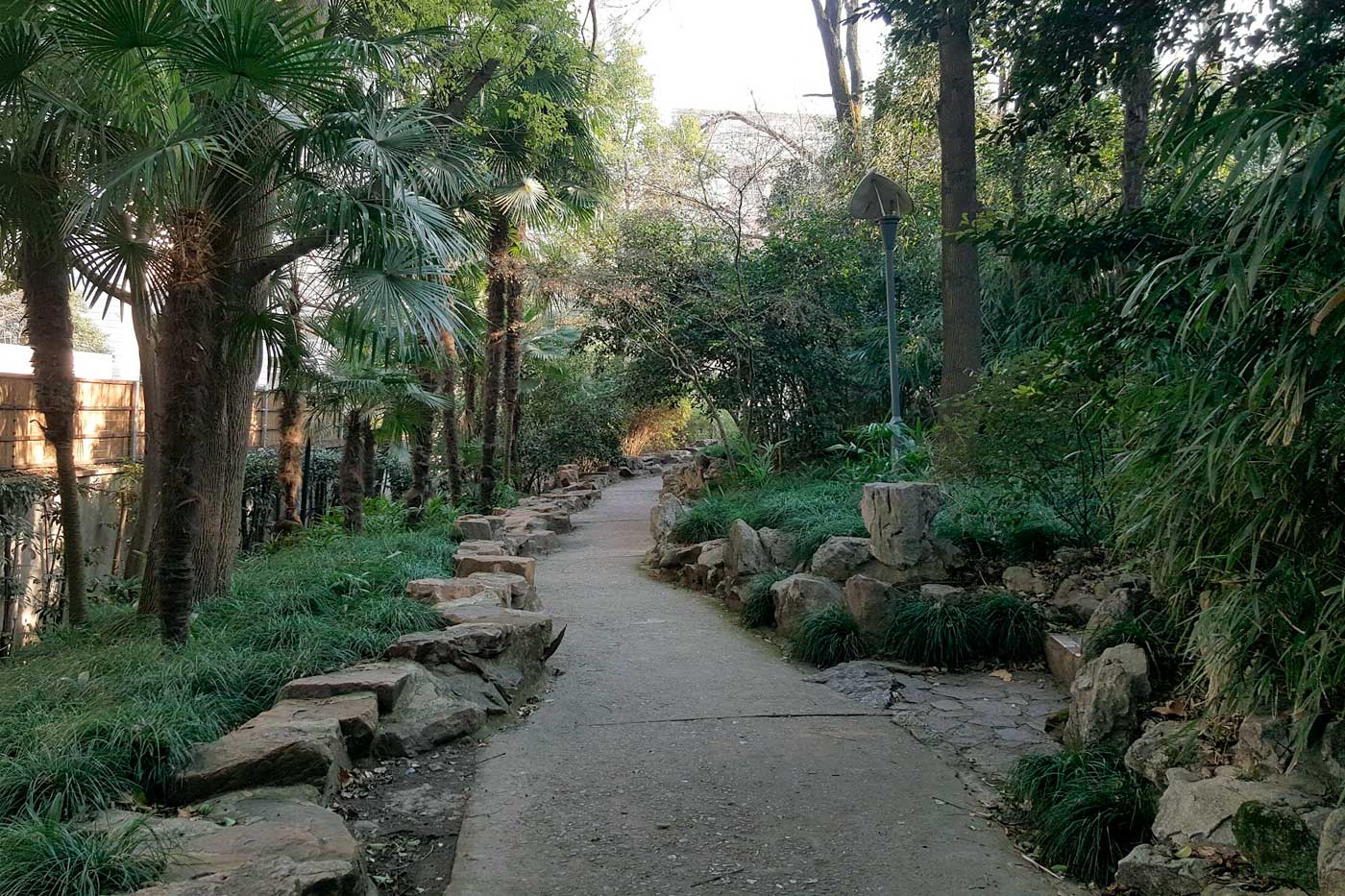
On any weekday, you’ll see plenty of local life—especially seniors practicing tai chi, playing Chinese chess, or even gathering to sing traditional opera. It’s a perfect window into the daily life of the city’s older residents.
On weekends, the park hosts the famous marriage market, a fascinating cultural scene where parents post ads offering their single children, listing their age, education, and income.
This might be surprising to Western visitors, but it’s one of many societal echoes left by China’s former one-child policy.
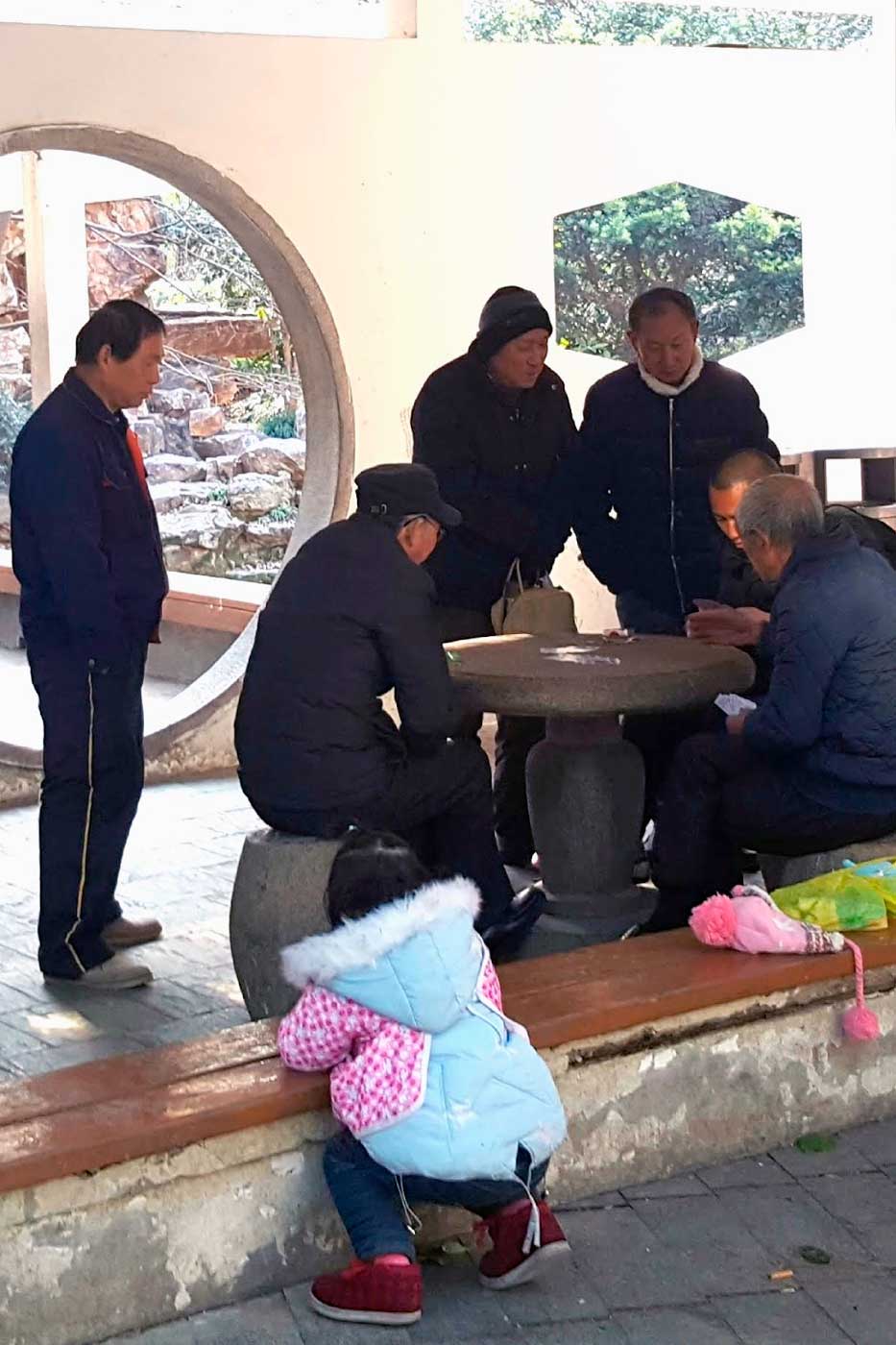
You can easily spend hours here, relaxing in the park’s cafés. From there, head to People’s Square (人民广场), located right next door—this is Shanghai’s political and cultural hub.
From the square, you can visit the Shanghai Museum (free and one of the country’s most important), art galleries, and the Grand Theatre. The views of nearby skyscrapers are also breathtaking.
Tech-savvy Chinese megacities like Shenzhen and Shanghai are unimaginable without their massive central shopping avenues—places that combine leisure, retail, street food, and urban life.
And Nanjing Avenue is one of the most iconic not only in China but in the entire world.
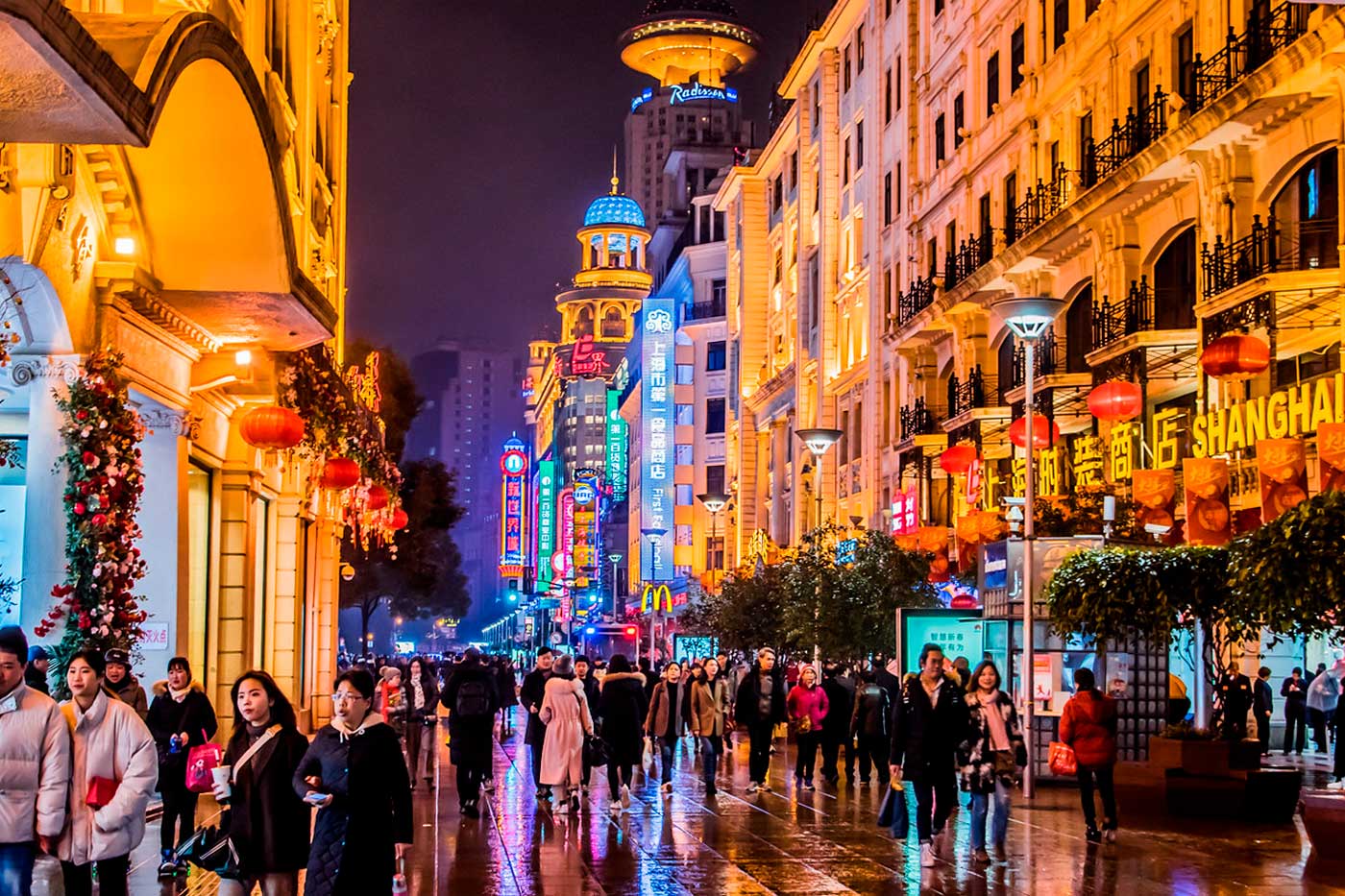
The avenue has two main sections, the most lively being Nanjing East Road (南京东路). It’s also the most tourist-friendly, though you’ll mostly see Chinese visitors from other provinces rather than international tourists.
More than just a place to shop—though major brands like Apple are here—it’s also the best starting point to transition from old Shanghai to the new, sampling street food along the scenic route.
Most of the city’s iconic urban photographs are taken right here, with a mix of historical architecture, neon lights, and futuristic skyscrapers in the background.
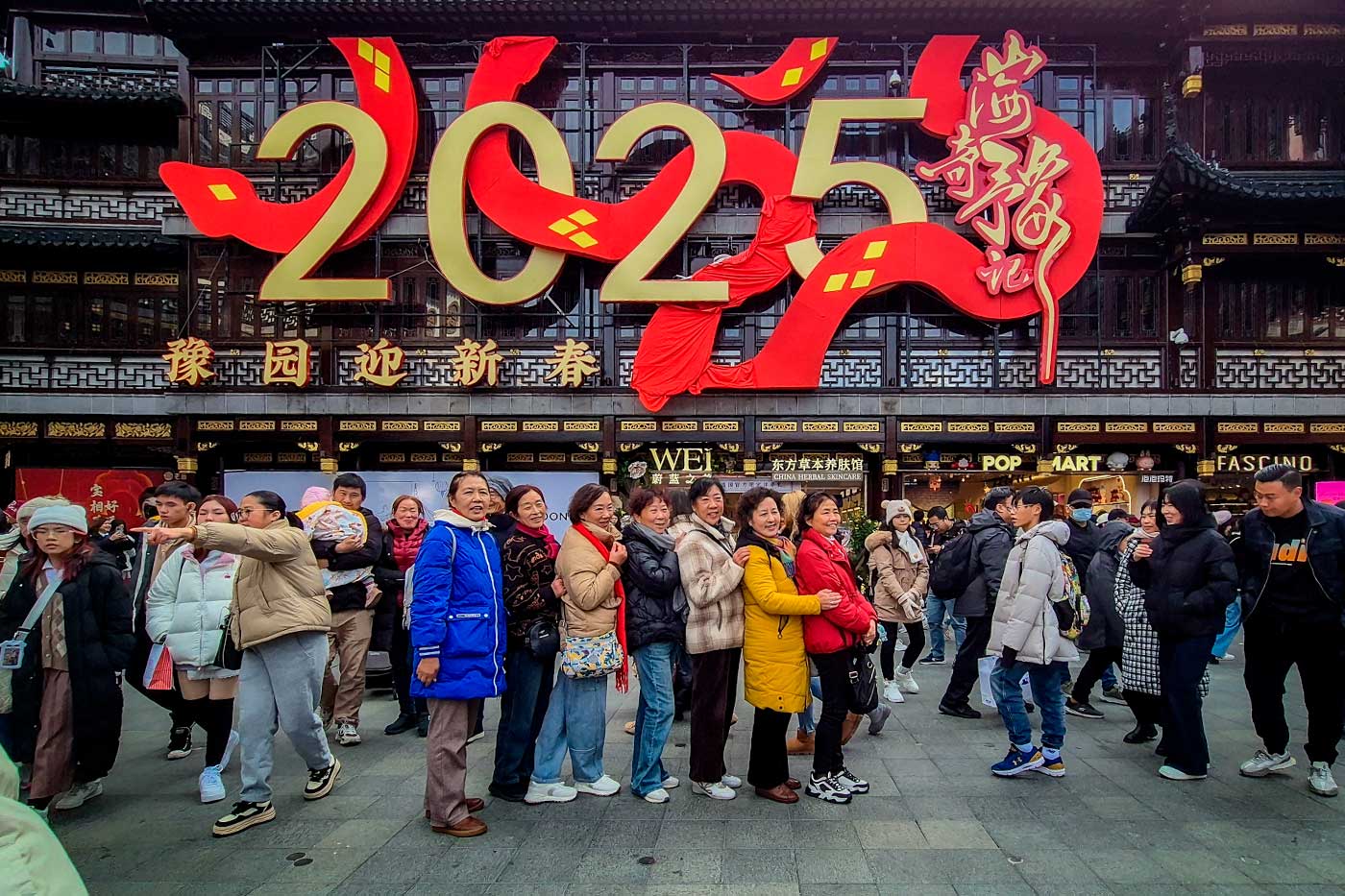
There’s also the western part of the street—Nanjing West Road (南京西路)—which is more focused on luxury malls, though you’ll also find independent bookstores and high-end designer cafés worth exploring.
Perhaps Shanghai’s most famous landmark—and arguably the most photographed spot in all of futuristic China—is The Bund (外滩). Here, the country’s colonial history meets its dazzling modern face, separated by the Huangpu River and connected by a grand promenade.
On one side, you’ll see the Lujiazui Financial District, defined by its geometric skyscrapers and striking skyline, crowned by the Shanghai Tower (上海中心大厦)—the second-tallest building in the world.
You can visit this area by crossing the river. While it’s primarily a financial district, architecture lovers will enjoy the steel-and-glass marvels, and you can go up to the world’s highest observation deck if you’re curious.
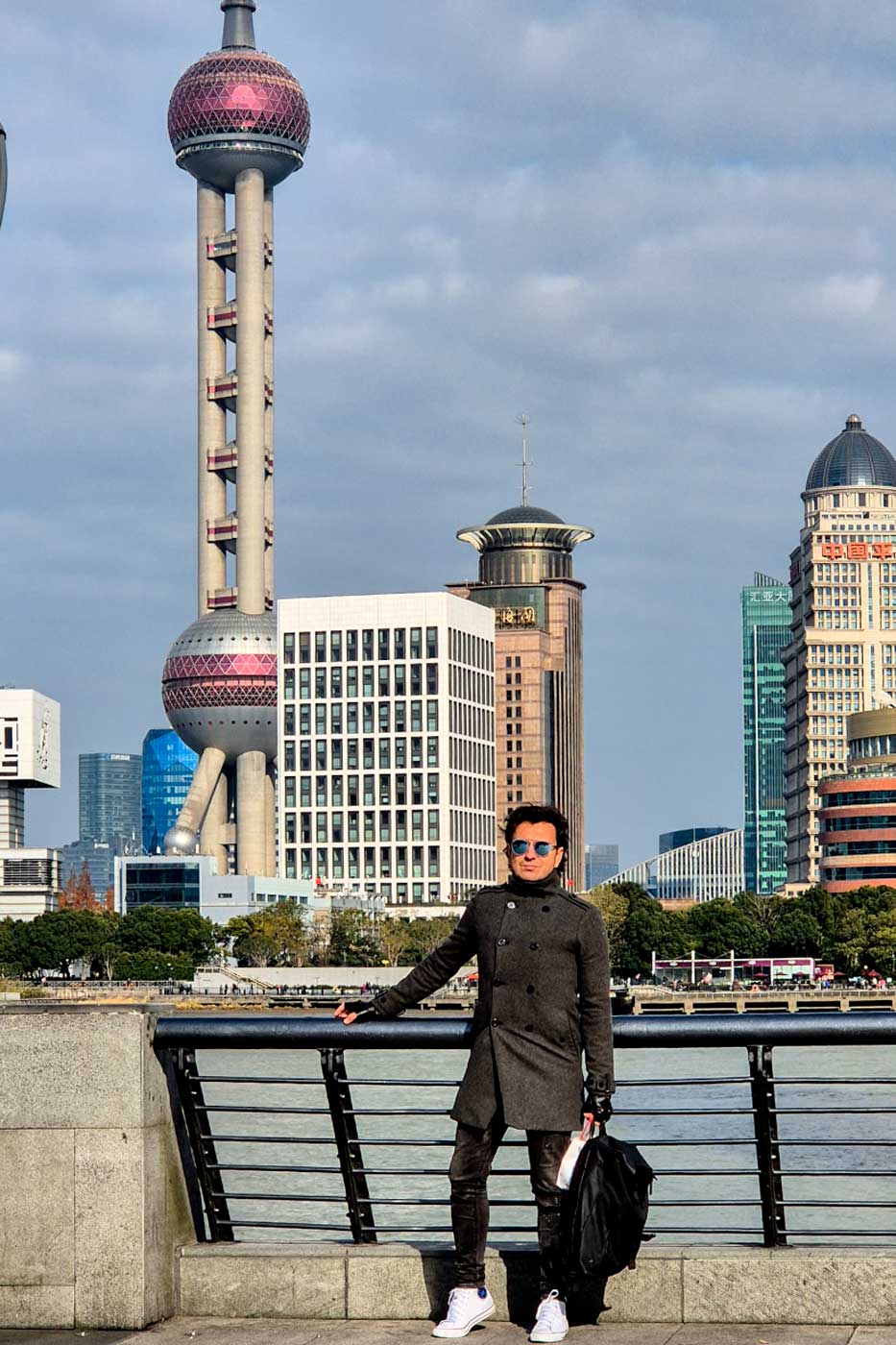
The Bund sometimes gives off a sense of grandeur—other times, it may seem overly extravagant.
Some say it lacks “real China,” but that’s missing the point: the modern China of today is just as authentic as its imperial past.
In this sense, Shanghai uses landmarks like the City Tower and the glittering Bund Promenade. Understanding this is key to understanding the ambitions of the world’s most populous country.

The other side of the Bund reflects the city’s colonial heritage, especially with buildings like the Customs House, featuring a huge English-style clock, and the former HSBC headquarters, an architectural gem of the early 20th century.
Of course, the Bund is also packed with things to do: You can take a river cruise, dine along the water, enjoy the area’s chic designer cafés, or simply take a sunset stroll.
For the best experience, try to arrive before sunset and walk from south to north. From there, you can cross into Pudong.
One of the most beautiful areas that preserves the spirit of old merchant China is the one surrounding the stunning Yuyuan Garden, located very close to Nanjing Avenue, in Shanghai’s traditional district.
What makes Yuyuan Garden so special is that it has maintained the essence of the era in which it was built—over 400 years ago. It features exquisite classical landscaping, with curved pavilions and elegant bridges that evoke the ancient empire.
Graceful carp swim freely in serene ponds surrounded by limestone rock formations and ancient trees. Everything is carefully designed for harmony—pure architectural poetry.
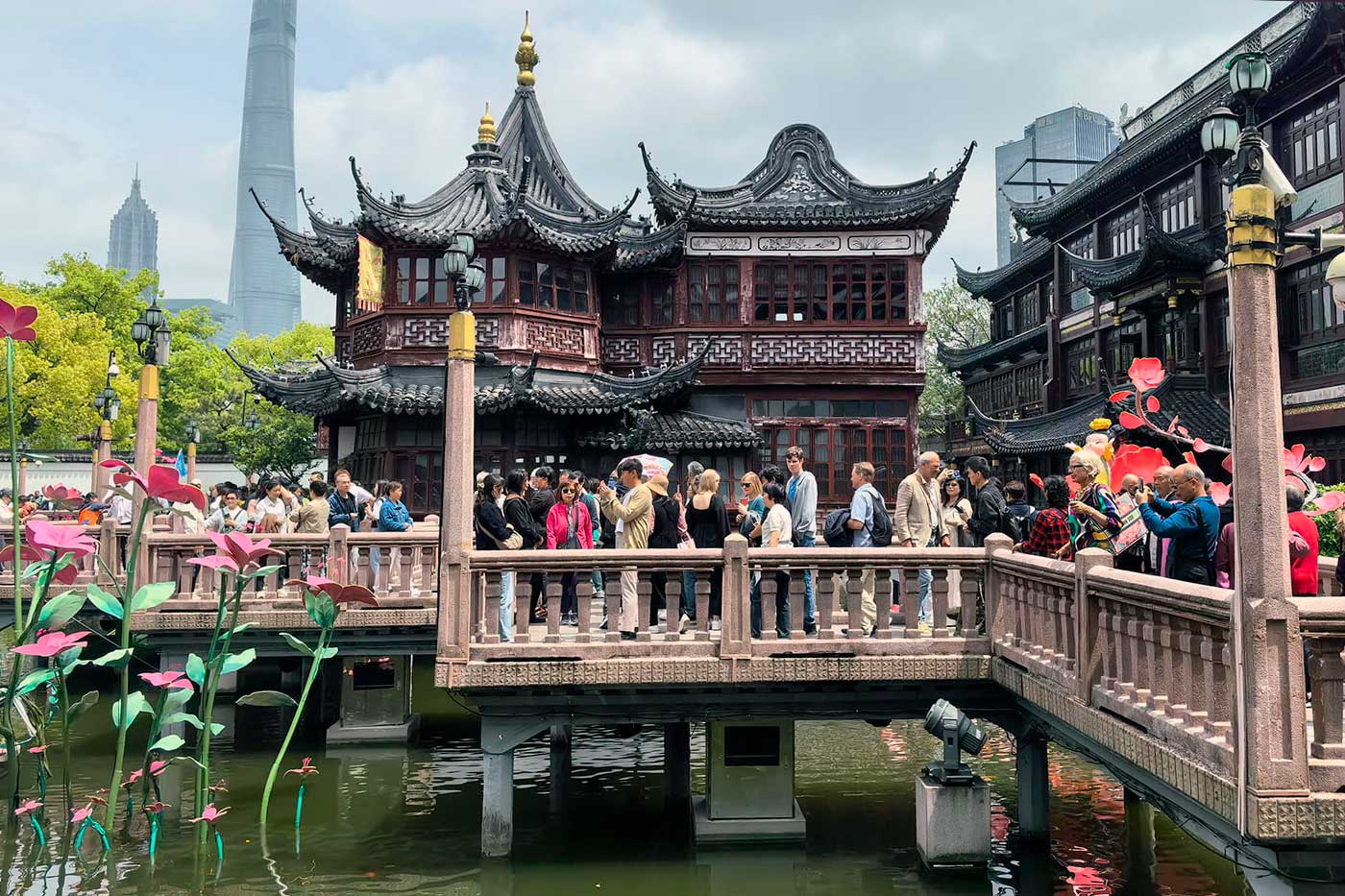
Yuyuan blends architecture, art, and nature within a relatively compact space, yet it’s filled with symbolic details.
You can enjoy the full experience for an entrance fee of around five euros. The only drawback is that there can be long lines on certain days.
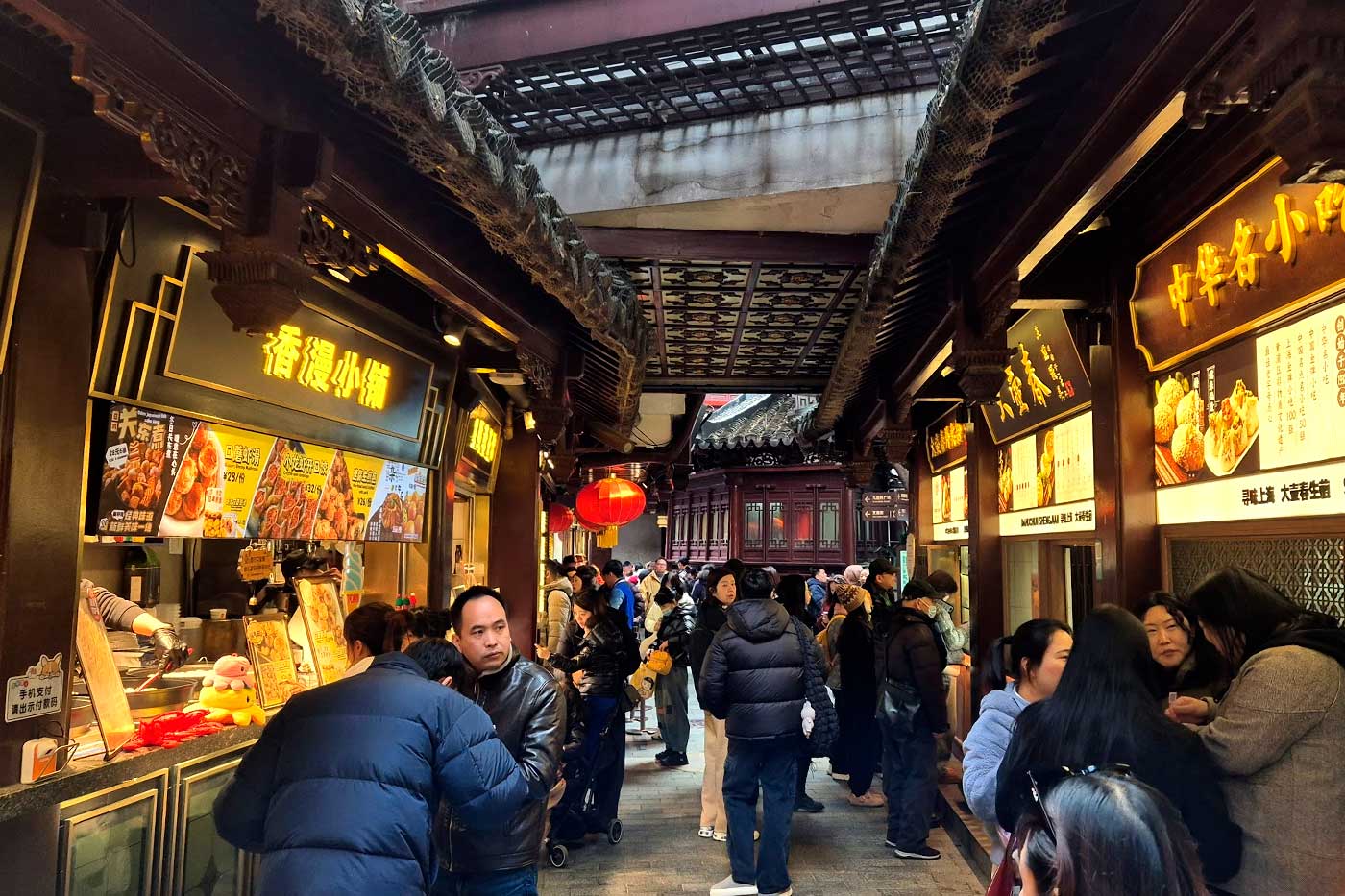
Around the garden, you’ll find a vibrant bazaar and a traditional food market, both beautiful and bustling—especially during public holidays or weekends.
In any case, it’s worth taking a walk around the area, and if you avoid lunchtime, you’ll have a better chance of trying some local delicacies from the street food stalls.
One of the most charming districts in all of Shanghai is, interestingly enough, not traditionally Chinese, but French—or rather, a unique blend of French colonial heritage and refined architecture. Easily accessible from South Shaanxi Road Station (陕西南路), it’s the perfect place to get pleasantly lost.
The French Concession is a network of quiet, tree-lined streets with a European café vibe and abundant greenery. Every corner looks like a postcard. You’ll find modern art galleries and historical villas along the way.
Walk down Fuxing Road or Wukang Road, and it’s like stepping back in time. The buildings around you showcase French colonial architecture, complete with manicured gardens and charming neighborhood shops.
Despite the foreign feel, there’s plenty of traditional Chinese calligraphy and red lanterns scattered throughout. It’s the perfect spot for a slow, relaxed stroll.

The area’s beauty dates back to the 19th century and the 1940s, when the concession functioned as an independent international enclave in China.
In other words, it was a territory outside Chinese jurisdiction, making it a refuge for revolutionaries, intellectuals, and bohemians. That’s where its cosmopolitan spirit comes from.
And somehow, it hasn’t lost that magic—perhaps because, surprisingly, it’s not overrun with tourists.
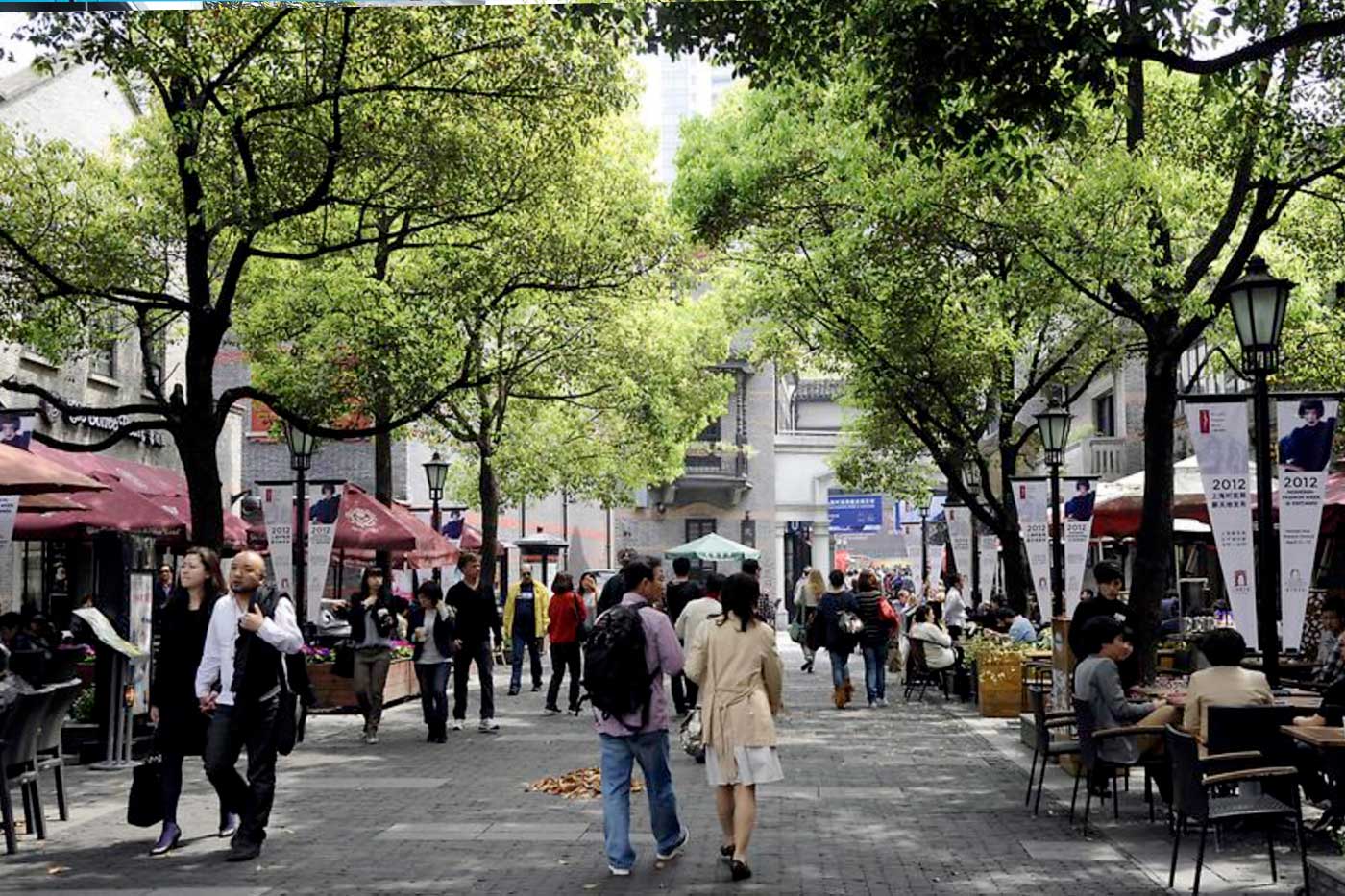
It’s also the perfect place to unwind. You’ll find craft beer bars, family-run dim sum spots, local bookshops, and a bohemian art scene that some might call Shanghai’s version of Montmartre.
China’s largest city is a true shopping paradise. You can find everything—from trinkets in traditional markets to original local designs. However, many tourists end up crowding the same few places.
Nanjing Avenue, particularly the eastern section, is a great spot for international brands. Just keep in mind that prices may be higher than in Europe or other parts of Asia—unless you’re shopping for Chinese brands, which tend to be very affordable.

On the tourist side, the bazaar near Yuyuan Garden is packed with souvenirs, including jade jewelry, teapots, and calligraphy sets. Prices are often low due to the high volume of visitors—but bargaining is essential.
If you’re looking for more local shopping, take Metro Line 2 to the Shanghai Science and Technology Museum Station, where you’ll find the AP Plaza underground market. It’s full of knockoffs, budget clothing from local brands, gadgets, and more.
We’ll never stop saying it: Chinese cuisine is among the best in the world—but to truly experience it, you have to come here. Fortunately, Shanghai offers a rich culinary landscape, with a special focus on Eastern Chinese cooking, influenced by several regional styles.
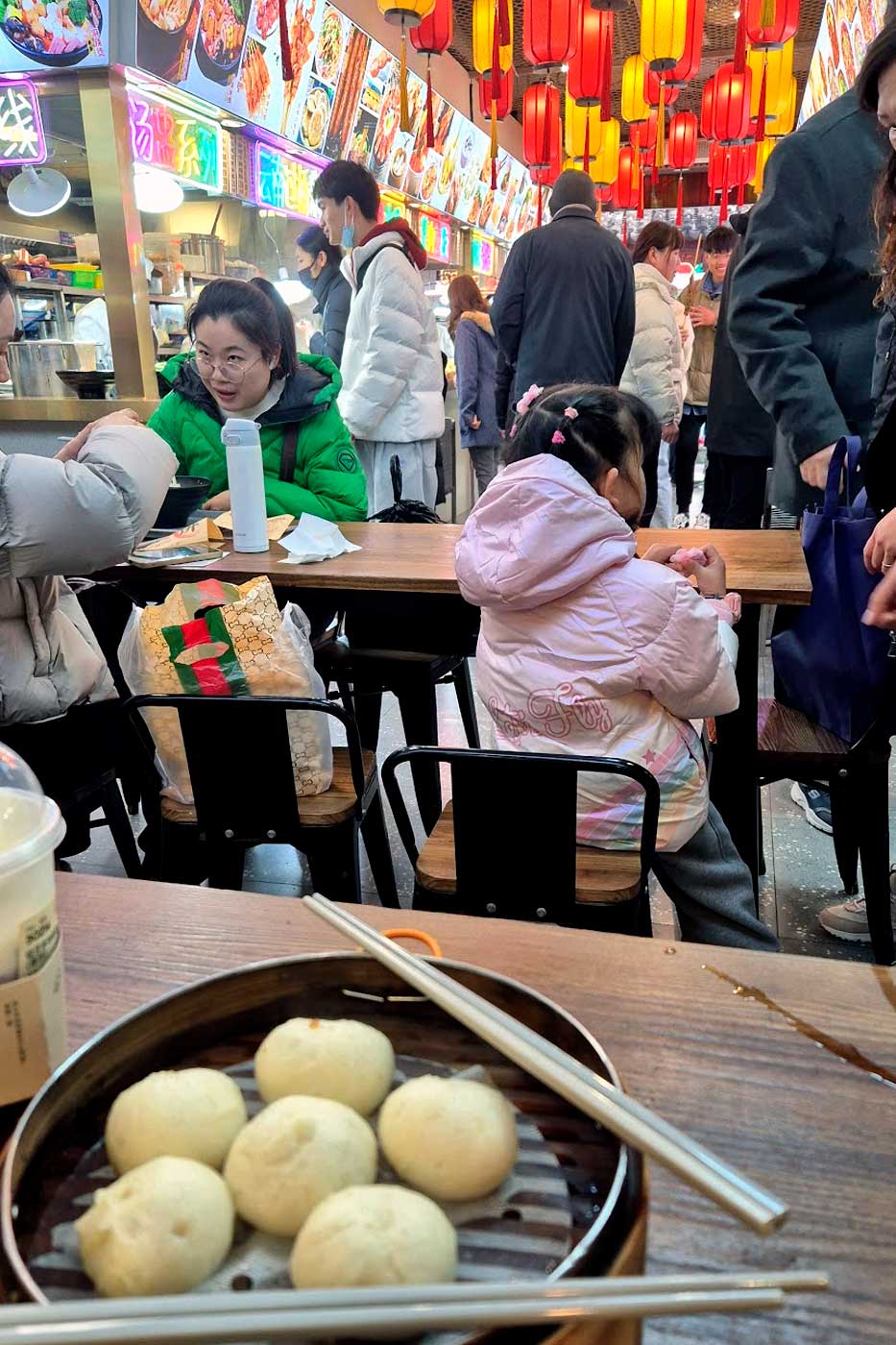
If you’re familiar with Hong Kong or southern China, you’ll recognize some similarities with Cantonese cuisine, such as the emphasis on rice, noodles, and fermented sauces. But the flavors are different.
In contrast, Shanghainese cuisine is quite distinct from the spicy Sichuan food that’s so popular across China.

Eastern Chinese food, like that found in Shanghai, tends to be sweeter and milder, with a heavy use of soy sauce. It’s a great entry point for those not yet familiar with traditional Chinese flavors.
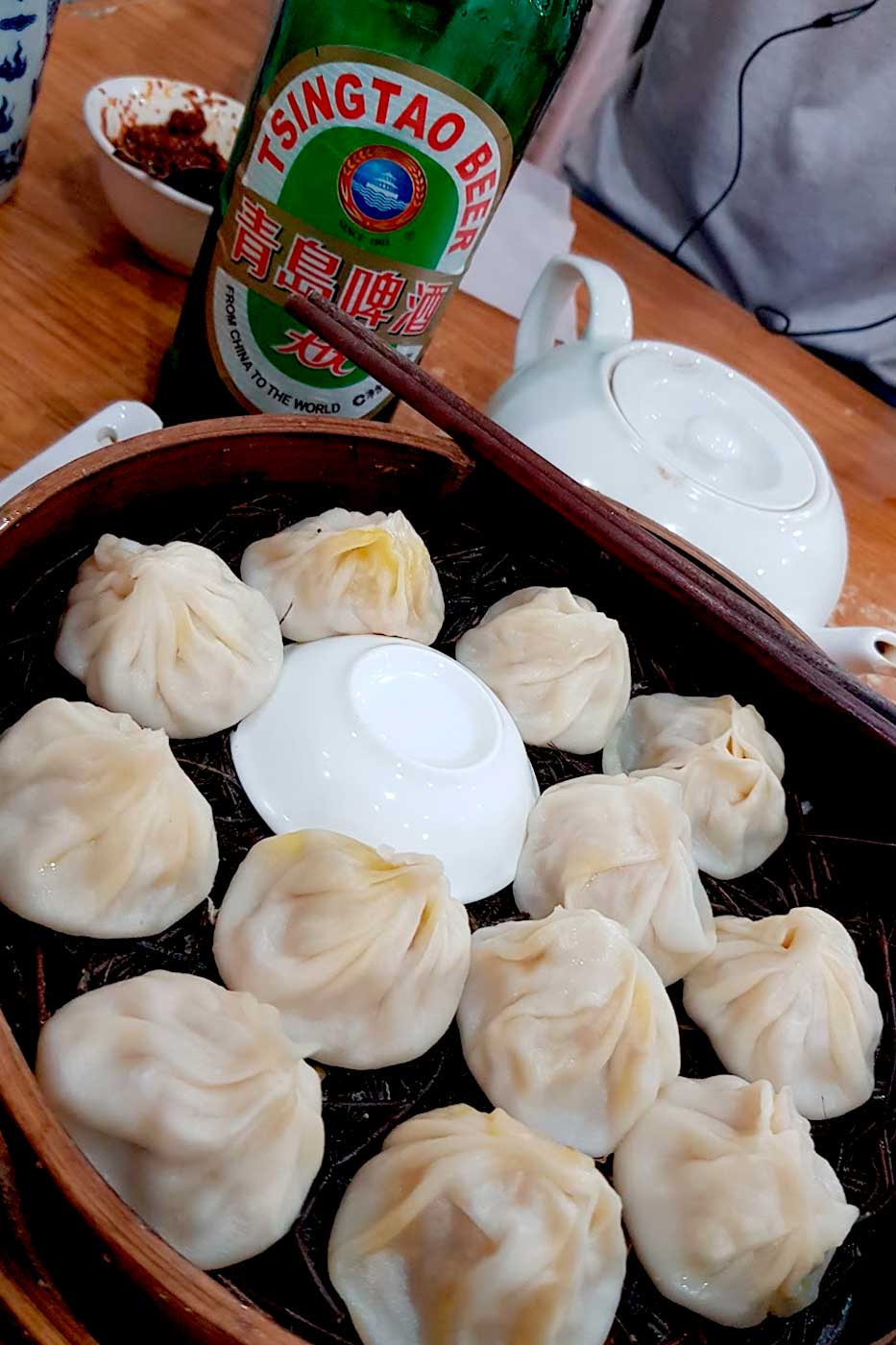
One of the most famous local dishes—also popular in parts of southern China and Taiwan—is xiaolongbao. One of the best places to try them is Lai Lai (莱莱小笼), a beloved restaurant near Nanjing Avenue. Just search for the Chinese name on Apple Maps or Baidu, and you’ll find it easily.
Shanghai is a surprisingly easy city to navigate, even though English isn’t widely spoken. You can get around on foot, by subway, or by taxi—and you can easily explore nearby areas on your own.
Of course, you can hire a guide if you prefer, but independent travelers will do just fine.
If you’re someone who likes to plan ahead, here are two day trips from Shanghai to get you started:
To get around more easily, copy and paste the Chinese characters for each destination we recommend and look them up on Apple Maps (for iPhone users) or on Baidu Maps or Maps.me (for Android).
And if you’d rather go with a tour, we’ll also leave you a link for guided excursions.

Easily accessible by metro and just an hour from the city center via Line 17, Zhujiajiao (朱家角) is a well-known water town on the outskirts of Shanghai.
It features peaceful canals, stone bridges, and cobbled streets—its classic image is that of wooden boats gliding through narrow waterways.
It’s ideal for leisurely strolls, visiting temples, or simply enjoying the laid-back atmosphere. It still manages to retain its authentic charm.
Reachable by high-speed train in about 30 minutes, Suzhou (苏州) is renowned for its classical gardens, winding canals, and Silk Road.
The city is home to two UNESCO World Heritage gardens, and its old town preserves a medieval layout, making it perfect for travelers interested in ancient Chinese architecture and cultural heritage.
The city of Hangzhou (杭州) lies just beyond the famous West Lake and blends natural beauty, rich history, and modern urban life. You can get there in under an hour by train from central Shanghai.
Hangzhou has a poetic atmosphere, offering a glimpse into what an imperial capital of the past felt like. It’s also a great city to explore by bike, less crowded than Shanghai, and filled with cultural depth.
Zhouzhuang (周庄) is one of China’s most famous canal towns—and for good reason. Its intricate network of canals, well-preserved traditional houses, and centuries-old stone bridges give it an unmistakable, photogenic atmosphere.
It’s a bit farther than other nearby towns, about two hours from Shanghai, but well worth the trip if you’re looking for a more immersive experience.
Unfortunately, Shanghai has the most expensive accommodation in mainland China—except for the special administrative regions of Hong Kong and Macau, where lodging is typically even pricier.
That said, prices in Shanghai aren’t outrageous—they’re just higher compared to other Chinese cities.
You can find hostels with dorm beds for around €10 in fairly central areas, and three-star hotels for two people typically cost between €50 and €90. However, if you stay in areas like the French Concession or The Bund, prices can rise significantly.
If you have a mid-range budget and choose your neighborhood wisely, you can find a great balance between comfort and cost.
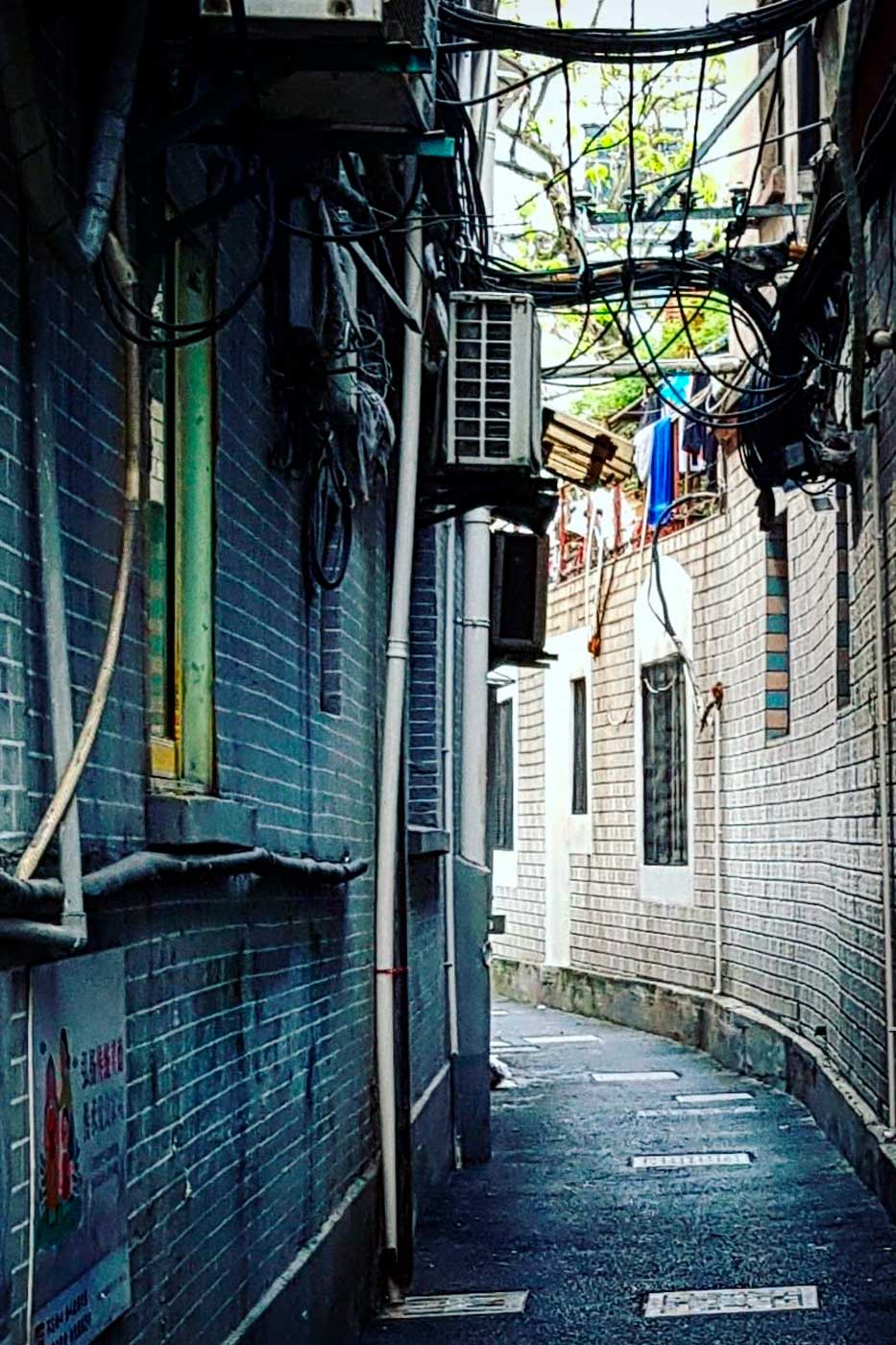
Yangpu is a great alternative if you’re looking for a lively, local atmosphere away from tourist crowds and luxury spots. Few travelers stay here, so you’ll get to witness authentic Shanghainese daily life. Expect small markets, local parks, affordable restaurants, and a young, student vibe, as it’s a university district.
People’s Square & Nanjing Avenue are considered the most central and diverse areas; they offer excellent transport connections and vibrant urban energy. While they can feel overcrowded, prices are surprisingly reasonable for such a central location.
The Bund is Shanghai’s most iconic district; also, one of its most expensive. With luxury hotels and spectacular views, it’s perfect for travelers seeking comfort or family-friendly walks near the waterfront. However, the price tag reflects the experience—although you’ll still find options across a range of budgets.
Chic, cultural, and full of charm, the French Concession is ideal for couples, art lovers, and bohemian travelers looking for a quieter stay. A Parisian Montmartre vibe. Prices are a bit higher than average but usually cheaper than the Bund or Pudong.
Modern, sleek, and focused on business travelers, Pudong is Shanghai’s most futuristic area, with top-tier hotels in dazzling skyscrapers. If you’re seeking five-star service and cutting-edge design, this is the place—though you’ll pay a premium for the experience.
Xintiandi is Known for its nightlife. It’s lively and stylish, but also one of the priciest areas.
Our recommendations for where to stay:
Shanghai is one of the easiest cities to navigate in China. It’s very walkable, with wide, scenic streets and excellent public transport.
Aside from the Maglev train from the airport, one of the fastest in the world, the city has a vast metro network with tickets costing between $1.5 and $2.5. In fact, you can travel nearly 40 km for just $2.
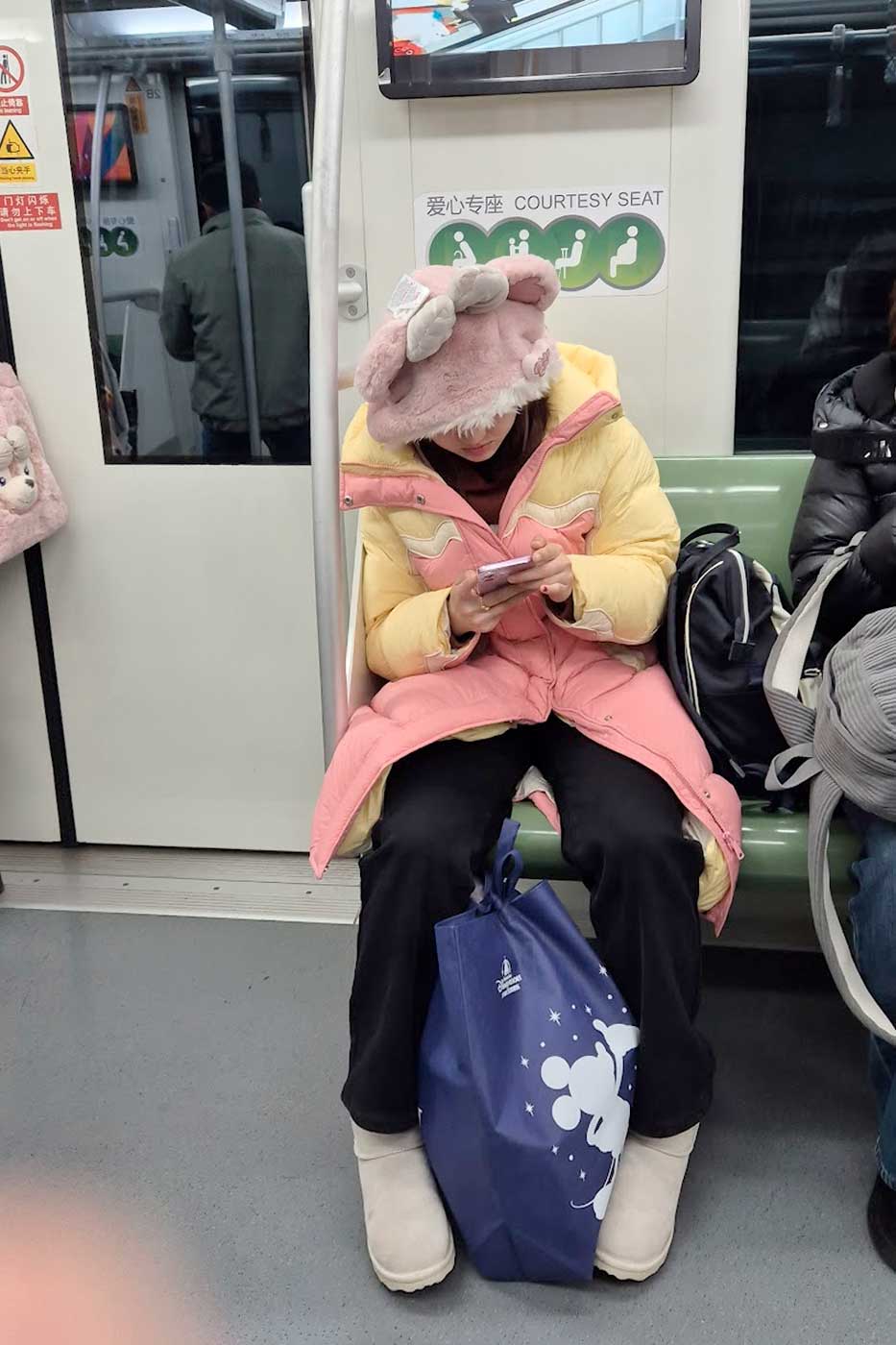
Taxis are also affordable. Use DiDi, the official ride-hailing app (available through mega-apps like Alipay), to see fares and call cars just like with Uber.
Click on the image and it will take you to a new Google Maps window with all the points of interest to travel around Shanghai